Smart Building Technology Solutions
Smart Building Technology can be applied across multiple industries and sectors, providing benefit in understanding an organisation's performance and efficiency of their building's infrastructure and workforce. Whether you are in the hospitality & accommodations, social housing, healthcare, education, or Facilities Management industry, Smart Building Technology has something to assist your business in making better decisions. Our customer centric, data driven approach, ensures all areas of a building's environment are optimised to directly benefit the occupants health, comfort and happiness. Providing better places to work & live
Housing Associations
Non profit organizations with philanthropic roots that between them home over 6 million people in England.
Housing associations believe that everyone should have a safe place to live, with a good quality of life and they are working hard together to achieve this.
Housing Associations are responsible for providing a quarter of new homes in England each year, these often include services and support not available with traditional methods of home ownership.
Improving tenant satisfaction with smart building technology
Smart building technologies can help housing associations improve tenant satisfaction thanks to proactive maintenance and quality-of-life enhancements.
Housing associations provide homes for over six-million people across England. This includes services and support that are typically unavailable with traditional methods of home ownership. Overseeing the application of government-mandated standards in England is the Regulator of Social Housing (RSH). They have created a new system for assessing how well social housing landlords are doing at providing quality homes and associated services.
In 2020, the government published its social housing white paper, which sets out the ways for landlords to improve the standard of living for those in social housing.
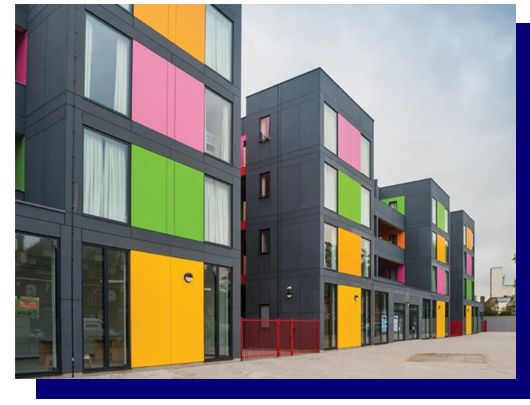
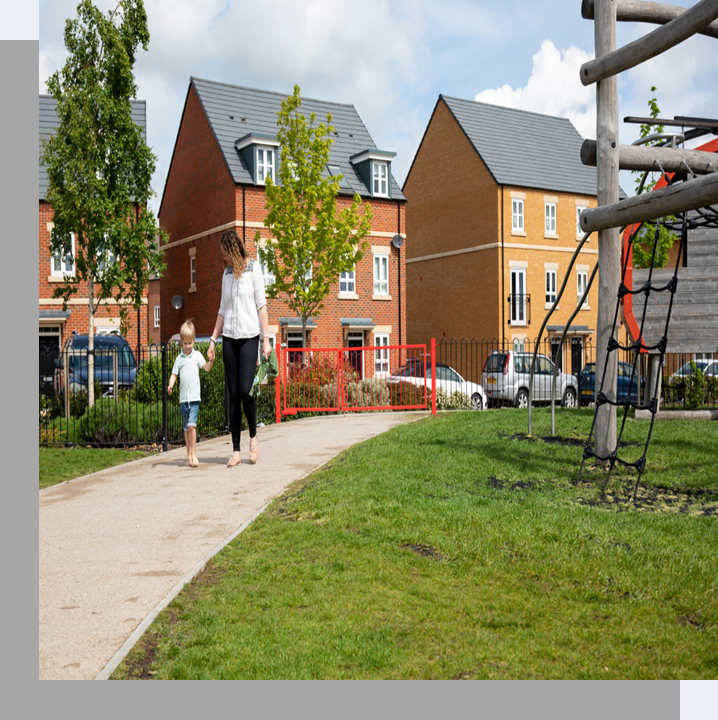
Among the main steps is introducing TSMs (Tenant Satisfaction Measures) to give tenants greater visibility into what landlords are doing to look after their homes, as well as give landlords insight into how they can improve things. The new measures apply to all social housing landlords.
Tenant Satisfaction Measures serve to help tenants hold their landlords to account on matters like the quality and safety of their homes. Landlords are responsible for keeping properties in good repair, maintaining RSH safety standards, managing complaints effectively, and taking an active role in supporting their communities. The new standard takes a data-driven approach to collecting, processing, and publishing the information needed to uphold the requirements.
Enhancing the tenant experience with IoT technologies
Social housing organisations are in a unique position to benefit from data-driven technologies like the Internet of Things (IoT). These innovations grant them the means to collect important data in real time and translate that data into actionable insights on a web-based dashboard. This, in turn, allows them to make informed and timely decisions about how they manage their properties. Furthermore, with internet-connected sensors, there is a reduced need to visit properties in person, thus freeing up time and resources.
For example, internet-connected sensors can help landlords proactively guard against mould, damp, and condensation issues by continuously monitoring temperature and humidity levels. Tenant Satisfaction Measures include collecting such data, thus giving landlords the insights they need to meet regulatory standards.
The RSH defines 22 TSMs spanning five areas. Ten of these measures are to be measured directly by landlords using a process that is relevant, accurate, responsive, deliverable, and linked to the RSH’s key objectives. IoT technology meets all these criteria by providing continuous real-time insights. For example, IoT can monitor gas and water supplies to better meet the demands of safety checks defined by the new Tenant Satisfaction Measures. With access to real-time data, landlords are better positioned to identify potential maintenance issues before they can become detrimental to tenants’ health or quality of life.
The remaining 12 TSMs are measured with tenant perception surveys. These insights come directly from tenants themselves and can help landlords prioritise their operations and identify any gaps in their building monitoring and data collection processes. TSMs will be introduced in April 2023.
Why Smart Technology is Ideal for Social Housing Projects
Installing smart sensor technology within the social housing sector has the potential to empower building occupants, both residents and staff alike. This technology is enabling housing professionals manage their assets in a data-driven and more efficient way.
Take smart thermostats, for example, which allow tenants to change the temperature or switch the heating off from their smartphone when away from home. These devices simultaneously reduce utility costs and help prevent costly issues such as damp or mold.
A recent smart thermostat pilot rolled out to 493 Housing Association properties was found to potentially save 1.82 tones of CO2 per year - with a move towards net carbon zero proving critical over the coming years, this is an exciting development for Housing Associations.
Energy Meters
There are
4.2 million smart utility meters in homes and businesses across the UK. By monitoring heating, electricity and water usage in real time, tenants and property managers no longer need to rely on estimated bills or regular meter checks. In turn, tenants can be assured that they only pay for exactly what they use.
Heating
Smart thermostats continually monitor energy usage and minimize power consumption, saving between £70 and £150 per household per year, according to the Energy Saving Trust. They can be remotely controlled to switch on the heating when a property is unoccupied, reducing the risk of pipes freezing and bursting. They can also provide a social benefit, by highlighting households that may be struggling with, for example, fuel poverty.
Connected thermostats also support more effective maintenance by continuously monitoring for faults and sending data directly to manufacturers. When a potential problem is identified, the manufacturer can either intervene remotely or send an engineer to solve the issue.
Fuel Poverty
Approximately 30% of housing stock is considered to be at high risk of damp, mold and condensation. On average, a cost of a disrepair claim for mold is £10,000. For a housing provider or landlord with 10,000 properties, this totals £30 million of potential exposure to disrepair claims for this problem alone.
For tenants, mold, damp and condensation issues can have significant impact on health. It can lead to allergic reactions and even asthma attacks. Technology-led solutions can prevent the growth of mold within residential property. By monitoring the temperature and humidity within a property, preventative action can be taken.
Legionella Remote Monitoring
With significantly more data available than with a manual temperature recording regime, monthly site visits reduced to a single annual visit, improved accuracy & reliability, a minimisation of disruption to an organisation, reduced administration time and cost and a massive improvement in sustainability to name just a few benefits.It is no wonder that remote water temperature monitoring to reduce the risk of Legionella outbreaks across sites is becoming the go to standard.
With a centralised customer data portal that is browser based and accessible from anywhere in the world. These systems are perfect for all types of businesses from small family run firms to multi-site nationwide organisations. All your assets can be viewed in one place and managed by one person. Action alerts and react in real time to issues as the occur, reducing the downtime of key services and improving the building environment in the process.
Lighting
The advent of LED technology has made lighting significantly more efficient in recent years, but leaving the lights on is a common way that families waste money and energy. Smart lighting can reduce household energy consumption by up to 90%. Remotely managing communal area lighting can also improve living conditions and security. Smart bulbs can learn when occupants are usually in or out, which may help deter potential thieves.
Protect Assets
IoT monitoring is not just suitable for use in the home. Assets within communal areas such as lifts and large boilers can be monitored to ensure they operate within their standard threshold. Whenever an abnormality occurs, you and your team will be sent a real-time alert via email, text or call – helping to prevent downtime or even failure.
Similarly, in instances where properties may be unoccupied, IoT led motion sensors can alert you to any unexpected movement within your properties or opening of door. With this system in place, those responsible for site security have a comprehensive view of your site remotely.
Water Leak Damage
Damp and water leakage issues are often an unexpected cost. Even minor leaks can quickly escalate with devastating consequences. With smart sensors, the problem can be highlighted as soon as moisture is identified and addressed before it is too late.
Smart sensors monitor and send real-time data about the property’s humidity and moisture levels. Combined with data from heat sensors, property managers can see where an issue might occur before any major problems arise. This can also have a profound impact on reducing health risks among housing occupants.
Security
For Housing Associations and their tenants, the implementation of smart technology – including wireless access control – is a win-win. Not only can it provide residents with benefits such as reduced bills, speedy delivery of maintenance, or greater peace of mind and security, but it also allows housing professionals to manage their buildings in a more efficient, sustainable and cost-effective way.
Smart devices can do everything from automated arming and disarming of alarms, to capturing CCTV footage and streaming to an off-site location for centralized monitoring. Smart locks are a great solution to the age-old issue of lost keys. Only requiring a smart phone with a matching signal to unlock them, access controls can be managed in a centralized online system.
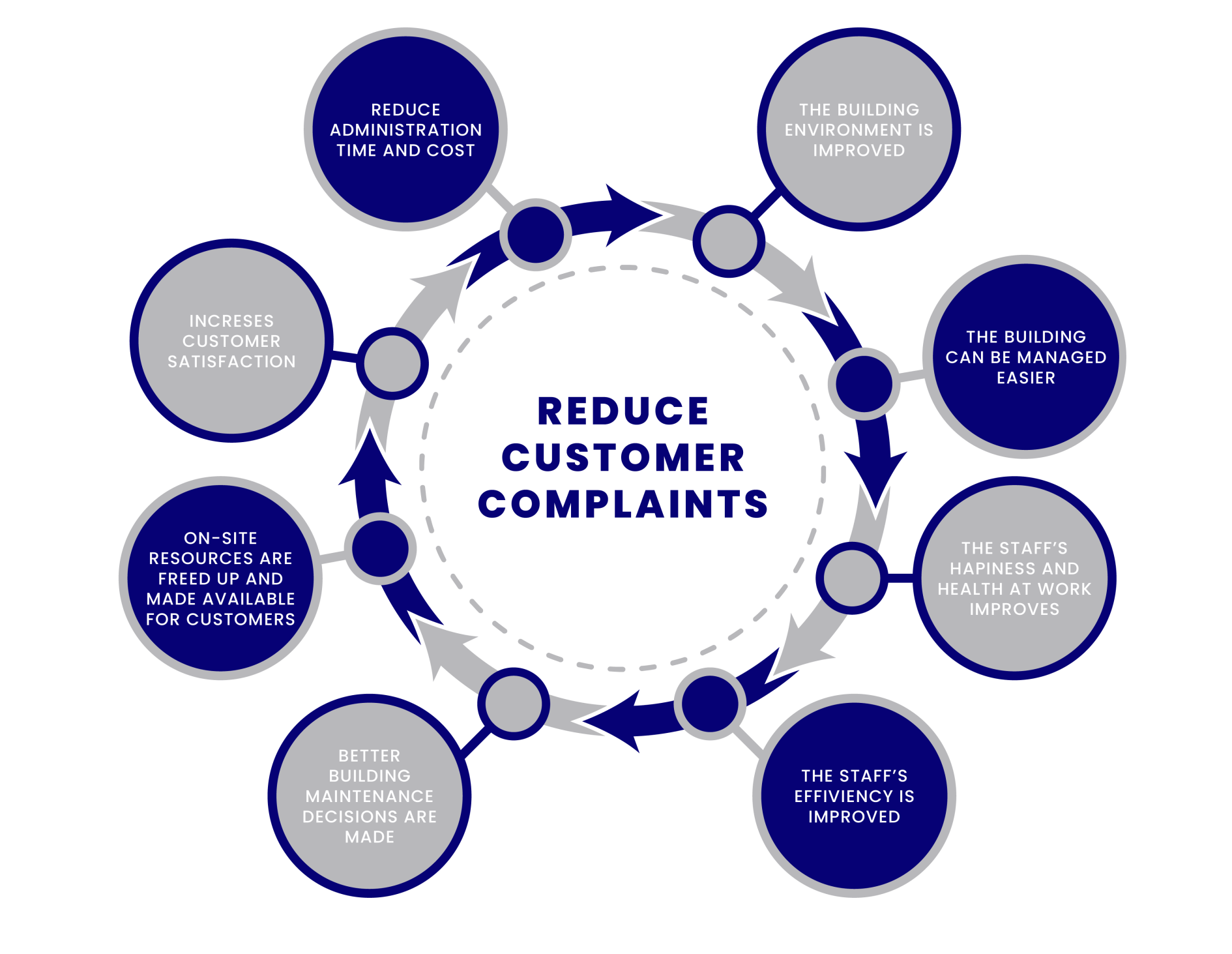
Benefits of Smart Technology for Social Housing Projects
Reduce Customer Complaints
The biggest KPI (Key Performance Indicator) in customer satisfaction is the number of customer complaints. High volumes of customer complaints is not only crippling to the daily running of a service such as a housing association but the damage to reputation of poor customer service and high complaint volumes cannot be underestimated.
With this KPI being so important, extra cost, time, resources, and staff is often spent on dealing with customer complaints rather than that money being invested back into the schemes to make real world improvements in an attempt to reduce the number of complaints in a positive way.
Boost Staff Health and Happiness
A well balanced building environment that is clearly important to the service provider gives a solid platform for people to perform at their best. If your workplace looks after you from the building environment upwards, you are far more likely to be happy at work, not take time off, and actually go the extra mile for them as you know they do for you. Happy staff will work harder and do more for the customers, providing a much better customer experience.
Improve Building Environment Health
The more data available from as many different types of sensors relevant to the building will only make a positive difference to the building environment health. By monitoring and maintaining comfortable levels of ambient temperature and humidity, by ensuring IAQ is high, and the building has good ventilation, you are making a happier and healthier environment for all building occupants. Staff will be more efficient, and customers will be more tolerant simply because of the conditions of the direct environment the building provides.
Increase Customer Satisfaction
By improving any of the other areas of building environment management, it will only ever end in improved customer satisfaction. Customer and end users of services don’t want much. They simply want the service advertised to do what it says it will do. This is the same for any user of any service, the absolute basic requirement is that the service does what it says. Giving end users a better place to be, with more comfortable climates, happier staff and more staff resources available to the end users when they are required are guarantees that the service will be as good as it can be.
Increase Service Uptake
By creating a better environment and healthier building with the implementation of a smart building system, customers will see everyday the improvement in building management, making their lives happier and easier to manage. Less downtime to services, better allocation of resources, happier staff, and a general sense of a good place to live will increase the uptake of new services offered by the housing associations. This in turn increases the budgets available to improve the customer’s experience.
Free up on-site Resources
Simply by reducing site visits alone from 12 monthly to 1 annual, the on-site resources required to administrate the site visits, the coordination on site to meet contractors and chaperone where required is reduced by 91.6% This benefit is carried over into the percentage of money saved, simply by no longer carrying out these tasks each month.
Remove contractor site visits
Having 1 system that can acquire all data needed to assist in building management and optimization means all current contractor sites visits are removed as they are no longer required. 1 annual site visit for system maintenance. No more missed site visits, no more admin to rearrange contractors and no more missed readings for all on site systems being monitored.
Enables Preventive Maintenance & Planned Management
Having access to data 24/7 enables data analysis to show trends and map performance of key assets. This knowledge allows a preventive maintenance plan to be adopted. Instead of changing components at set timed intervals or when there is a full break down, using data you can see when the performance starts to drop off and therefore when new components are required. Over time this picture can be developed to show the expected life of components within the key assets on site.
The world has changed!
The world has changed! This is not an opinion; it is a fact. Since Early 2020 when COVID-19 first hit the world, so many things have changed. Although we are now in a time of recovery and the restrictions on our lives do seem to have been lifted, many people are still working from home or ‘remotely’ as it is often referred to, many people are not going out as much as they did, many buildings have reduced staff numbers and many disruptions still occur in the aftermath.
- COVID-19 – Unfortunately, COVID-19 is still a big problem effecting so many aspects of life. The disruption of staff being off from work and the knock on effect of isolating is causing huge stress on the infrastructures in place across many industries.
- Access to sites and assets – With many organisations reducing staff numbers, accessing sites and assets within sites is becoming more difficult.
- Missed site visits – With many staff having to take unexpected time off from work, many planned visits for scheduled manual monitoring programs are not being carried out on time
- Missed critical readings being recorded – Many assets, especially those hard to reach are being missed from visits as there is no access available or no one to chaperon visiting engineers during planned site visits.

Remote IoT Sensors vs BMS
Remote IoT Sensors
This technology has opened the world of remote monitoring to everyone and everything. All sensors are designed to be retro fitted to assets, enabling them to be monitored in the same way a BMS systems does within more complex buildings and sites. With a fully modular approach, Remote IoT Sensors allows users to monitor their highest needing assets first and build their network up over time. Begin your journey with Legionella Watch and Remote Temperature Monitoring, simply keep adding new sensor types to expand your network, end your journey with an easy to manage, more compliant and Smart building.
BMS
Stands for Building Management Services or Systems. An approach used in large and complex buildings with a full complement of building services such as HVAC, Chilled and Hot Water and Heating, Lifts or elevators, Fire Alarms, Refrigeration, and Security Systems. All of these will be connected via a LAN (Local Area Network) to a Head End Terminal to be monitored by on site facilities staff. BMS systems are installed during a buildings construction and are very expensive to implement. They are normally focused on plant equipment with the further reaches of the system left unmonitored. The cost to extend a BMS to include these elements is often prohibitive, as the installation and commissioning of hard wired sensors after construction is completed can cause huge disruption.
Remote IoT sensors can be used to enhance existing BMS systems at a fraction of the cost. All sensors are plug and play and can be added to the network as and when they are required or desired. Grow your building environment data and see your building management optimisation in a new and smarter way!
BMS
- Reduce Maintenance and repair costs.
- Provides a better working environment.
- Environment Friendly.
- Remote access means little or no down time.
- Security Risks
- Data Collection is difficult
- It is very expensive
- Installed during a building’s construction
Remote Iot Sensors
- Reduce Maintenance and repair costs.
- Provides a better working environment.
- Environment Friendly.
- Remote access means little or no down time.
- Data Collection is easy
- It is not expensive.
- Designed to be retro fitted.
- Makes tasks easier.
- Security Risks
What is Remote Monitoring?
Remote Monitoring is a general term for any remote sensor monitoring any type of asset. Normally battery powered and with wireless data transmissions, remote sensors are changing the world we live in. Sensors send data to IoT Network gateways which then transmit it to hosted data servers connected to browser based software applications displaying the data on user dashboards. The ability to visualise data for so many aspects of building management give huge control to the building managers. Precise decisions can be made, efficiency can be boosted, preventive maintenance can be adopted, and resources and finances can be saved.
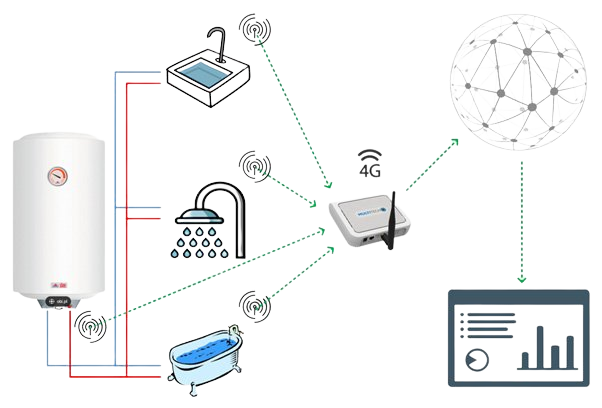
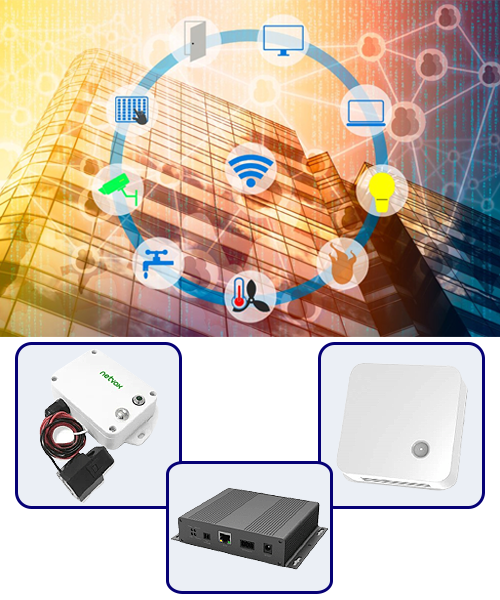
What is SMART Technology?
First, what does SMART mean? SMART stands for SELF-MONITORING, ANALYSIS and REPORTING TECHNOLOGY. It is a technology that uses artificial intelligence, machine learning, and big data analysis to provide cognitive awareness to objects that were in the past considered inanimate.
There are 3 main types of Smart Technology.
Internet of Things (IoT) - Describes the network of physical objects “things” that are embedded with sensors, chips, software, online connectivity, analytics, and applications to bring fixed physical objects to life. These devices create significant value, they are innovative, scalable, and automated.
Smart Connected Devices – Usually connected to the internet or Bluetooth and controlled remotely, smart connected devices can offer a tailored user experience but must be physically managed given that they don’t adapt to the extent IoT devices do. Smart Phones or Smart Bulbs are an example of Smart Connected Devices.
Smart Devices
- With reduced automation, no internet connection required, and of a programmable nature, smart devices, for instance, smart washing machines, provide specific personalized services at a particular time.
The whole process from installation to the updated weekly report has been fantastic.
Its purpose was to demonstrate how a newly installed system was operating for a 3-month period, so we could iron out any issues, or flag up any areas of concern before full hand over to the client. The real time data allowed us to make several minor adjustments and changes to achieve satisfactory temperatures throughout the property that would not normally be picked up.
Many Thanks for all your efforts, we shall definitely utilise this system on projects going forward
